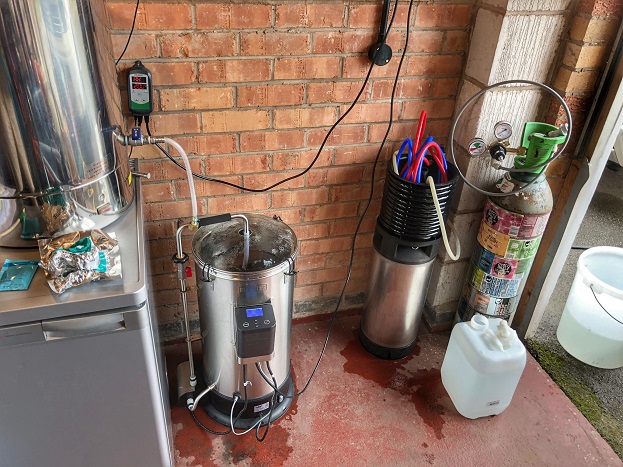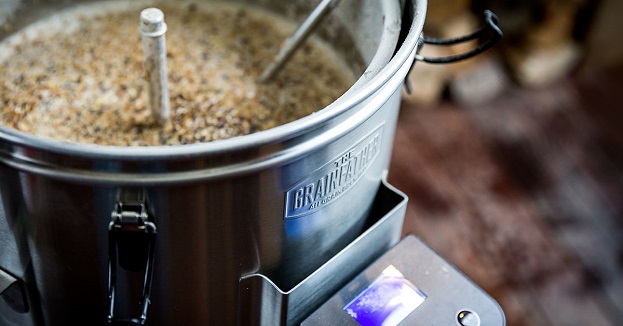What’s the Ideal Way to Brew Your Own Beer?
Australians love their craft beer. But it’s one thing to analyse the consistency, aftertaste or procedures used in a craft beer somebody else made, and another thing to actually do it on your own with success. Homebrewing can be overwhelming for beginners. You have all those steps, all that gear and most of all you’ve got your peers, the beer connoisseurs, that bear the thirst to tear you apart. If you want to try your hand at homebrewing and don’t know where to start, here’s some advice that can be of great help.

Source: popularmechanics.com
Get a Complete Homebrewing Set
Getting a microbrewery kit is a good way to learn the basic elements of homebrewing equipment. On the market, you can find very convenient homebrewing systems like Grainfather. These sets are perfect for beginners because they are an all-in-one system that is easier to use when compared to buying all the elements separately. You can start from there and accumulate additional supplies as needed.
Craft beer production consists of mashing, sparging, straining, boiling and cooling. This comprehensive brewing kit puts all those processes under one lid. A basic homebrewing kit should include (in no particular order):
– A graincoat or insulation jacket – It serves to reduce heat loss and to maintain the temperature as stable as possible.
– The Mangrove Jack’s Hop Spider –Made from stainless steel mesh, this element reduces the sediment in the wort and holds hops consistency while boiling. It allows maximum wort flow.
– Paddle – Comes at a length of 61cm, also made from stainless steel to stir the mash
– Wortometer – Provides control of the wort transfer temperature by adjusting flow rates. It’s compatible with the control box thermometer and the counterflow chiller to get the wort temperature for any yeast.
– Cleaner – Used to remove the excess proteins before they scold on hot surfaces. It can be used on stainless steel and copper. Also useful in getting rid of the counterflow wort chiller and pipes.
– Overflow Filter – It’s designed to be placed between the overflow inlet and the top mash plate. Made from stainless steel, the overflow filter prevents particles from moving down the pipe.
– Micro Pipework – Used to adjust the internals so brewing small batches is possible. You can add a grain bill of only 4 kg and get a product.
Some kits, like the Grainfather, also offer Bluetooth connectivity. This will allow you to gain insight into the brewing process even if you are not immediately in front of the fermenter. Such design improvements in micro brewing systems are welcomed by newcomers and seasoned brewers alike.

Source: brulosophy.com
Start Slowly and Expect Mistakes
You shouldn’t be too hard on yourself, for mistakes are quite common in beer-brewing (more than you would think), especially at the beginning. Embrace the fact that this endeavour will include a trial and error period and a steep learning curve.
Be mindful of this and start off with brewing beer in small quantities in case the whole experiment goes awry. Either that or find someone that is willing to subscribe to drink your failed batches.
Further Refine Your Beer Nose
Beer was brewed for millennia. One of the first known beer recipes dates from 1800 B.C. in Summeria. And today, with a quick Google search you can find millions of beer recipes for both beginners and expert brewers alike.
Beer comes from combination of hops, grains, malt extracts, water and last but not least, yeast. However, the way these ingredients are blended together and their amount will differ from one recipe to another. Plus, some recipes might call for the addition of a secret ingredient, like for instance some type of spirit or a fruit.
That being said, experiment with different recipes to find precisely what you like and what other people will also enjoy. As you grow more confident, you can also come up with your own unique recipes.

Source: pinterest.com.au
Surrender to the Process
Nothing good comes from tense environments. Learn to surrender to the flow of making beer. Do what it takes to get ‘in the zone’ and finish the job at hand. Even if that means that you need to introduce some beer-related superstition, like for instance playing music.
And don’t get discouraged if people criticise your final results. As long as you yourself enjoy what you’ve made, you can consider it a success. There is nothing that can make you more aware of beer quality like making it yourself. Maybe you will start to have more understanding for beers that are not as great as a grand jury would like them to be. And you will be easier on the next craft beer you taste.



